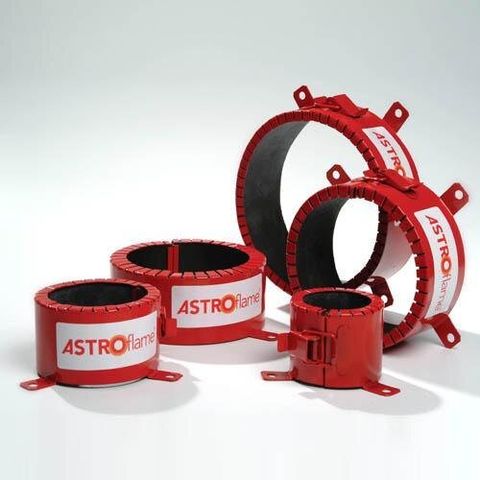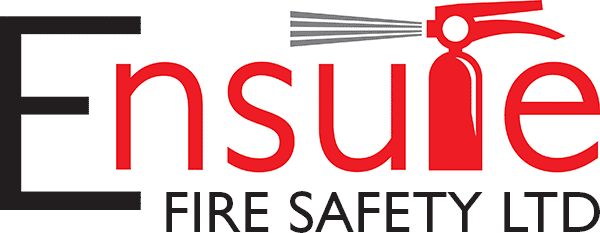Installation, maintenance and servicing of fire alarms and safety equipment
Everything you need to keep your people safe and ensure your premises in Norfolk is compliant. Discuss your needs
with Ensure Fire Safety Ltd today.
Taking care of your fire safety equipment
Design:
We offer a free, no obligation site survey for clients across East Anglia, where our knowledge of current legislation and the recommendations contained in BS5839 Pt1 means that we can advise on the type of system best suited to your needs and budget, whether that be for fire alarms, lighting or other fire safety equipment.
Installations:
Our engineers are City & Guilds qualified electricians and Fire Industry Association trained and certified in installation techniques and standards. We liaise closely with our clients to enable us to gather the information needed to cause the least disruption possible to the running of your business during the installation.
Maintenance / periodic servicing:
We believe our pricing is very competitive and is, if carried out with servicing of other fire safety equipment (extinguishers and/or emergency lighting), very cost-effective. We pride ourselves on our extremely high standards, regardless of the complexity of your system.
Fire alarms
As well as prevention, a fire alarm system is the first line of defence in preventing the devastating affects a fire could have on your business. Early identification and warning of a fire gives people time to escape to safety and can give fire-trained personnel or the fire brigade the opportunity to tackle a blaze before it gets out of hand. Installation of a suitable fire alarm system may also reduce insurance premiums. If you would like additional information or training on this, we offer a range of courses to individuals across Norfolk, Suffolk and other areas of East Anglia.

Fire extinguishers
Should a small fire break out at your business or property, fire extinguishers, properly used, could prevent the fire getting out of control before fire-fighting services arrive. We would recommend that every business property has at least one fire extinguisher. Our engineers are Fire Industry Association trained and certified in the selection, installation and maintenance of portable extinguishers in line with the recommendations in BS 5306 Pts 3 & 8. Any extinguishers that fail a service will be identified to the customer with an explanation as to why they failed. Our engineers carry spare extinguishers, which, with the customers' approval, we will replace where required during the service (negating the need for costly re-visits).
Types of extinguishers:
- Class A: Organic materials, (wood, paper, textiles etc)
- Class B: Flammable liquids, (petrol, oils, solvents etc excluding cooking oils - see Class F below)
- Class C: Flammable gases, (butane, methane etc)
- Class D: Metal fires
- Class E: Electrical fires
- Class F: Cooking oil fires
Selection and installation
Our FIA trained engineers will assess the fire risks of a building or property and recommend the correct types and number of extinguishers to reduce the risks. To comply with BS 5306 Pt3, all new extinguishers should be commissioned into service (installed by a competent engineer). Commissioned extinguishers are then usually wall mounted to be visible and readily available, whilst out of the way enough to not be in danger of being knocked by passing foot traffic. ID signs are required above each extinguisher to identify the extinguisher type, the classes of fire it can be used on and any classes of fire it shouldn't be used on.
Passive fire protection
As its name suggests, passive fire protection (PFP) is a form of fire safety provision that remains dormant, or inert, during normal conditions but becomes active in a fire situation. It is an integral component of structural fire protection in a building, which is designed to contain fires or slow their spread. The purpose of PFP is to contain the spread of fire for sufficient time to permit i) the safe evacuation of all occupants of the premises and ii) the arrival of the fire brigade. The person responsible for fire safety also has a duty of care towards any members of the emergency services, e.g. fire fighters, who may have to enter the premises during the course of a fire; in slowing the spread of flames, smoke and hot gases, PFP also serves to ensure the building remains as safe as possible for entry in this situation.

PFP installations
PFP provision is required in all buildings, whether domestic or non-domestic, with the purpose of containing / compartmentalising / retarding the spread of fire. There are several methods and products available that will achieve the required standard of fire resistance in existing buildings, some of which may be more appropriate than others. If you have any doubts about the best way to ensure PFP provision in your premises, you should seek the advice of a competent person. Any new build, modernisation or extension works must be carried out in accordance with The Building Regulations 2010, Fire Safety, Approved Document B. In respect of internal fire spread (structure) and the relevance of PFP in particular The Building Regulations 2010 (Volume 2, p 67) stipulate the following (Requirement B3):
'Where reasonably necessary to inhibit the spread of fire within the building, measures shall be taken, to an extent appropriate to the size and intended use of the building, comprising either or both of the following –
(a) sub-division of the building with fire-resisting construction;
(b) installation of suitable automatic fire suppression systems'
(b) installation of suitable automatic fire suppression systems'
Fire Safety Signage
Fire signage will, in some shape or form, be required in every commercial building. Signage initially should be provided to identify preventative fire safety measures (no smoking, fire door, fire escape etc). Should a fire break out, signage should be present to enable safe evacuation of the building.
The loss of power and illumination in the event of an emergency can cause panic and confusion for the evacuee. Photoluminescent products, when used effectively to locate,
identify and instruct on all aspects of fire safety management, can make a major difference in an emergency situation. Photoluminescent safety signs are designed to conform to the relevant Domestic and International Standards: BS EN ISO 7010:2012 (Including amendments 1,2 & 3), BS5499 Part 4: 2013, BS ISO 3864 Part 1: 2011, BS ISO 3864 Part 3:2012, BS ISO 3864 Part 4: 2011, BS 5499 Part 10: 2014, and satisfy the requirements of EC Directive 92/58/EEC. We use JALITE as a preferred manufacturer and provider of Photoluminescent signage.
Emergency lighting systems
Suitable emergency lighting should be installed to illuminate escape routes, exit doors and any safety equipment (fire extinguishers, fire alarm panels, first aid boxes etc), during a mains lighting failure.
Following a free site survey, our engineers will offer advice on the specific requirements for your business in line with the recommendations contained in BS5266 Pt1.
Forms of emergency lighting:
PAT testing
Portable appliance testing is a procedure to maintain electrical equipment to prevent danger as far as is reasonably practical. All electrical equipment, whether permanently connected or connected by plug and socket-outlet, should be inspected and tested in accordance with the recommendations contained within the IEE Code of Practice. Each test lasts only a few minutes depending on ease of access to the equipment.
A full visual inspection is carried out checking for damaged flexes, plugs and equipment, incorrectly wired plugs and incorrectly rated fuses. Once the item passes the visual inspection the item is plugged into the portable appliance tester and a series of electrical tests are carried out. A label is then attached to the item showing the asset number, date when next test is due, and whether it passed or failed.
The results are then sent back to our head office in Great Yarmouth for processing, where an Asset Register and Test Report is prepared and sent to you with the Certificate of Conformity.

